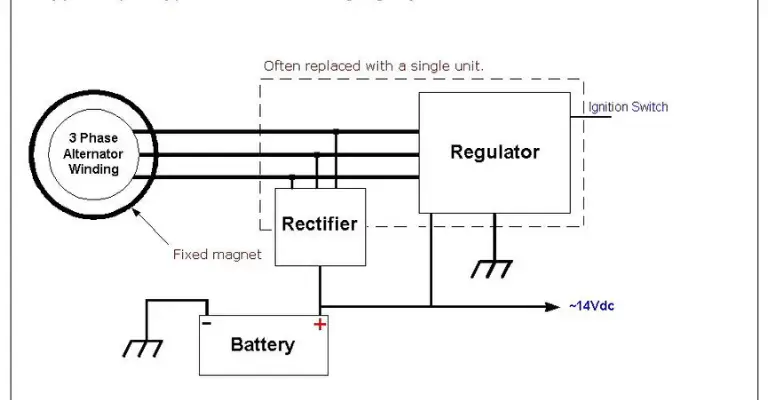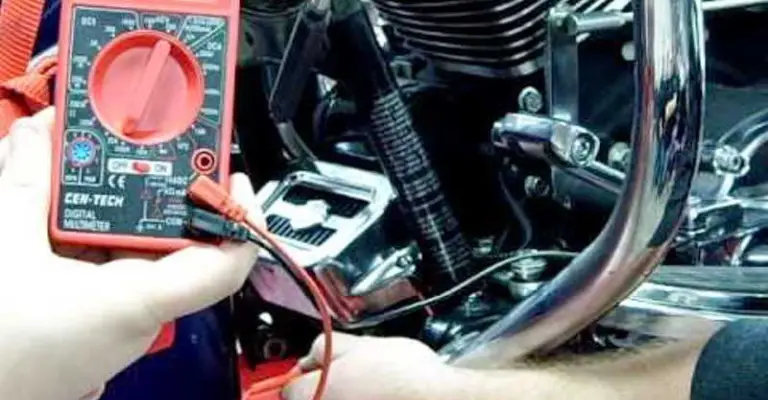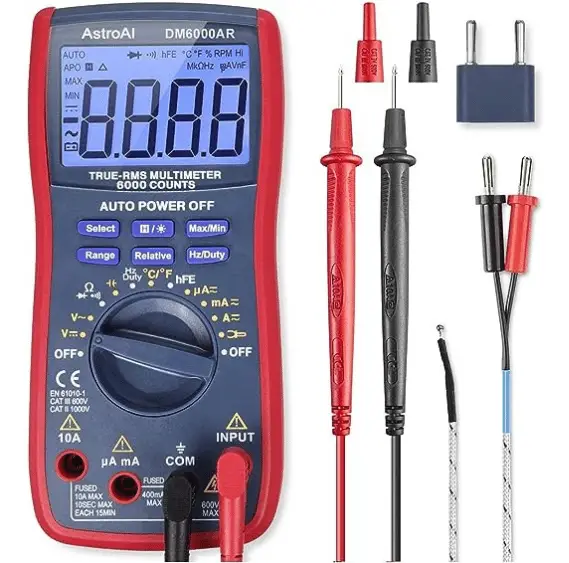For any seasoned Harley Davidson enthusiast, the roar of the engine is a symphony, the smooth road glide, a dance. But what happens when this harmony is disrupted by engine hiccups or if the beast cannot unleash its power as it used to do?
Such hitches often uncloak the real culprit – a Harley Davidson voltage regulator. A vital component, if faulty, can trigger a series of palpable symptoms that could bottleneck your road adventures.
This article shines a light on bad Harley Davidson voltage regulator symptoms, enabling you to decode these elusive signs before they escalate into major issues.
Strap in and let’s go, as we steer you through troubleshooting, one voltage fluctuation at a time!
What is a Harley Davidson Voltage Regulator?
A Harley Davidson voltage regulator is an integral component in the motorcycle’s electrical system. This device controls the voltage level distributed from the motorcycle’s stator, maintaining a steady charge and preventing the battery from being overcharged and damaged. Harley Davidson voltage regulators are designed to withstand the high temperatures and vibrations of a motorcycle engine, ensuring efficient operation of the bike’s electrical components.
The Role of a Voltage Regulator in a Harley Davidson Motorcycle
The primary function of the voltage regulator is to regulate the flow of electrical power within the motorcycle. More specifically, it maintains a steady voltage level, irrespective of the load or supply variations. This ensures that the motorcycle’s electrical components, such as the ignition system and the lights, receive a steady supply of power.
The voltage regulator achieves this by comparing the actual output voltage to a set reference voltage. If the output voltage exceeds the reference voltage, the regulator reduces the flow of current. Conversely, if the output voltage falls below the reference voltage, the regulator increases the current flow. This constant adjustment helps maintain a stable voltage level in the motorcycle’s electrical system.
Here’s an example of how most motorcycle charging systems are configured. Note that most regulators and rectifiers are now combined into one unit. Also, stators/alternators/magnetos can all be used interchangeably in some cases.

Recognizing Harley Davidson Voltage Regulator Symptoms
| Symptoms of a Bad Voltage Regulator | Description |
|---|---|
| Dim or Flickering Lights | Lights on the motorcycle appear dim or flicker intermittently, indicating voltage fluctuations. |
| Dead or Overcharged Battery | Battery is either undercharged (resulting in a dead battery) or overcharged (leading to acid leakage and damage). |
| Engine Not Starting | Motorcycle engine fails to start due to insufficient battery charge caused by a faulty regulator. |
| Check Engine Light On | The check engine light illuminates on the dashboard, signaling a potential voltage regulator issue. |
| Sudden Power Loss | Motorcycle experiences abrupt loss of power while riding due to irregular voltage supply. |
Understanding the symptoms of a bad Harley Davidson voltage regulator can help you detect potential issues early on, thereby preventing further damage to your motorcycle’s electrical system. Here are some of the common symptoms to watch out for:
Dim or Flickering Lights
One of the earliest and most noticeable symptoms of a bad voltage regulator is dim or flickering lights. This occurs when the regulator fails to provide a steady voltage supply, causing the lights to fluctuate in brightness. If you notice that your motorcycle’s lights are dimmer than usual or flicker intermittently, it may be a sign that your voltage regulator is malfunctioning.
Dead or Overcharged Battery
A faulty voltage regulator can either overcharge or undercharge your motorcycle’s battery. An overcharged battery can lead to battery acid leakage, which can damage other parts of the motorcycle. On the other hand, an undercharged battery can result in a dead battery, preventing your bike from starting.
Engine Not Starting
In some cases, a bad voltage regulator can prevent your motorcycle’s engine from starting. This is because a faulty regulator can drain the battery, leaving it with insufficient charge, unable to start the engine.
Check Engine Light On
Another clear indication of a failing voltage regulator is an illuminated check engine light. If your motorcycle’s check engine light comes on, it is a good idea to have your bike inspected by a professional to identify the cause of the problem.
Related: Harley Check Engine Light Comes On After Start? Help Is Here
Sudden Power Loss
If your motorcycle suddenly loses power while you’re riding, it might be due to a bad voltage regulator. A faulty regulator can cause irregularities in the power supply, leading to sudden power loss.
Read next: Harley EITMS Problems
Causes of Harley Davidson Voltage Regulator Problems
Several factors can contribute to a Harley Davidson voltage regulator malfunction. These include:
Damaged Wiring
Damaged or corroded wiring can interfere with the voltage regulator’s ability to control the voltage level, leading to overcharging or undercharging of the battery.
Loose Battery Connections
Loose battery connections can also cause problems with the voltage regulator. If the battery terminals are not securely connected, the regulator may not be able to accurately measure the voltage level, resulting in erratic voltage regulation.
Overheating
Overheating is another common cause of voltage regulator failure. If the regulator becomes excessively hot, it can damage the internal components, rendering the regulator ineffective.
Age and Wear
Like all mechanical parts, voltage regulators are subject to wear and tear over time. As the regulator ages, its performance can deteriorate, leading to voltage regulation issues.
Keep reading: Bad Harley Stator Symptoms
Diagnosing a Bad Harley Davidson Voltage Regulator

If you suspect your Harley Davidson voltage regulator is malfunctioning, it’s important to conduct a diagnosis to confirm the issue. Here’s how:
Tool You’ll Need:

Voltage Testing
Using a multimeter, you can test the voltage output of your motorcycle’s electrical system. With the bike off, the multimeter should read a little over 12 volts. If the reading is significantly lower or higher, it could indicate a problem with the voltage regulator.
Load Testing
Performing a load test involves connecting a DC light bulb to the voltage regulator’s output and revving the engine. If the bulb’s brightness fluctuates as you rev the engine, it could be a sign of a faulty voltage regulator.
AC Ripple Testing
You can also conduct an AC ripple test using an oscilloscope, which displays electric voltage signals. With the engine running, connect the oscilloscope to the regulator’s output. If the ripple voltage exceeds about 100mV peak to peak, your voltage regulator may be faulty.
[su_button url=”https://www.amazon.com/s?k=motorcycle+multimeter&crid=1QQCI9XR8WFZD&sprefix=%2Caps%2C142&linkCode=ll2&tag=theseasonedwr03-20&linkId=e2568adf97b1bd35b05f4ea19f133ae6&language=en_US&ref_=as_li_ss_tl” background=”#f2000d” color=”#ffffff” size=”11″ wide=”yes” center=”yes” rel=”nofollow”]> Need Diagnostic Help? Shop Multimeters Now[/su_button]
Here’s a video that sums up all these steps in a more digestible format:
[su_youtube_advanced url=”https://www.youtube.com/watch?v=bVThKEKr5hU”]
Fixing a Bad Harley Davidson Voltage Regulator

If your Harley Davidson voltage regulator is faulty, the best course of action is usually to replace it. Here’s a step-by-step guide on how to replace a voltage regulator on a Harley Davidson motorcycle:
Locate the Regulator
The voltage regulator is typically located in the front of the bike and has fins to help dissipate heat.
Remove the Old Regulator
To remove the old regulator, you’ll need to unfasten the mounting hardware that holds it in place and then disconnect it from the regulator lead. You’ll also need to disconnect the regulator wire from the main circuit breaker.
Install the New Regulator
To install the new regulator, simply reverse the removal process. Connect the regulator wire to the main circuit breaker, secure the regulator to the bike frame, and plug it into the alternator lead.
FAQs and Related Questions
What Exactly is a Harley Davidson Voltage Regulator?
A Harley Davidson voltage regulator is a crucial part of your motorcycle’s electrical system. It’s responsible for maintaining a steady voltage level, ensuring that your battery remains healthy and preventing overcharging. This component plays a vital role in keeping your bike’s electrical components functioning smoothly, especially when you’re out on the road.
How Does the Voltage Regulator Impact My Harley Davidson Motorcycle?
The voltage regulator in your Harley Davidson has a significant impact on your overall riding experience. It keeps the electrical power flowing consistently to essential components like lights and ignition systems, regardless of changes in load or supply. This ensures that your bike starts up reliably and that your lights remain bright, contributing to both safety and performance.
What Are the Telltale Signs of a Faulty Harley Davidson Voltage Regulator?
Recognizing the signs of a bad voltage regulator can save you from potential problems down the road. If you notice your lights flickering or becoming dimmer than usual, experience issues starting your engine, or find your check engine light illuminated, it could be a signal that your voltage regulator is acting up. Additionally, sudden power loss during a ride is another red flag to watch out for.
What Common Issues Lead to Problems with Harley Davidson Voltage Regulators?
Several factors can contribute to voltage regulator problems. Damaged wiring, loose battery connections, overheating due to extended use, or general wear and tear over time are typical culprits. These issues can disrupt the regulator’s ability to maintain a consistent voltage level, resulting in various electrical complications.
How Can I Diagnose and Fix a Bad Harley Davidson Voltage Regulator on My Own?
If you suspect your voltage regulator is malfunctioning, you can perform some diagnostic tests to confirm the issue. Using tools like a multimeter and an oscilloscope, you can test the voltage output, load response, and AC ripple of the regulator. If it’s indeed faulty, you can replace it yourself by locating the regulator, disconnecting it, and installing a new one. However, if you’re unsure, seeking professional assistance is always a wise choice to ensure proper installation and functionality.
Concluding Thoughts
Understanding the symptoms of a bad Harley Davidson voltage regulator and knowing how to diagnose and fix them can save you from costly repairs and ensure a smooth ride. Whether it’s dim or flickering lights, a dead battery, or an illuminated check engine light, recognizing these issues early can prevent further damage to your motorcycle’s electrical system.